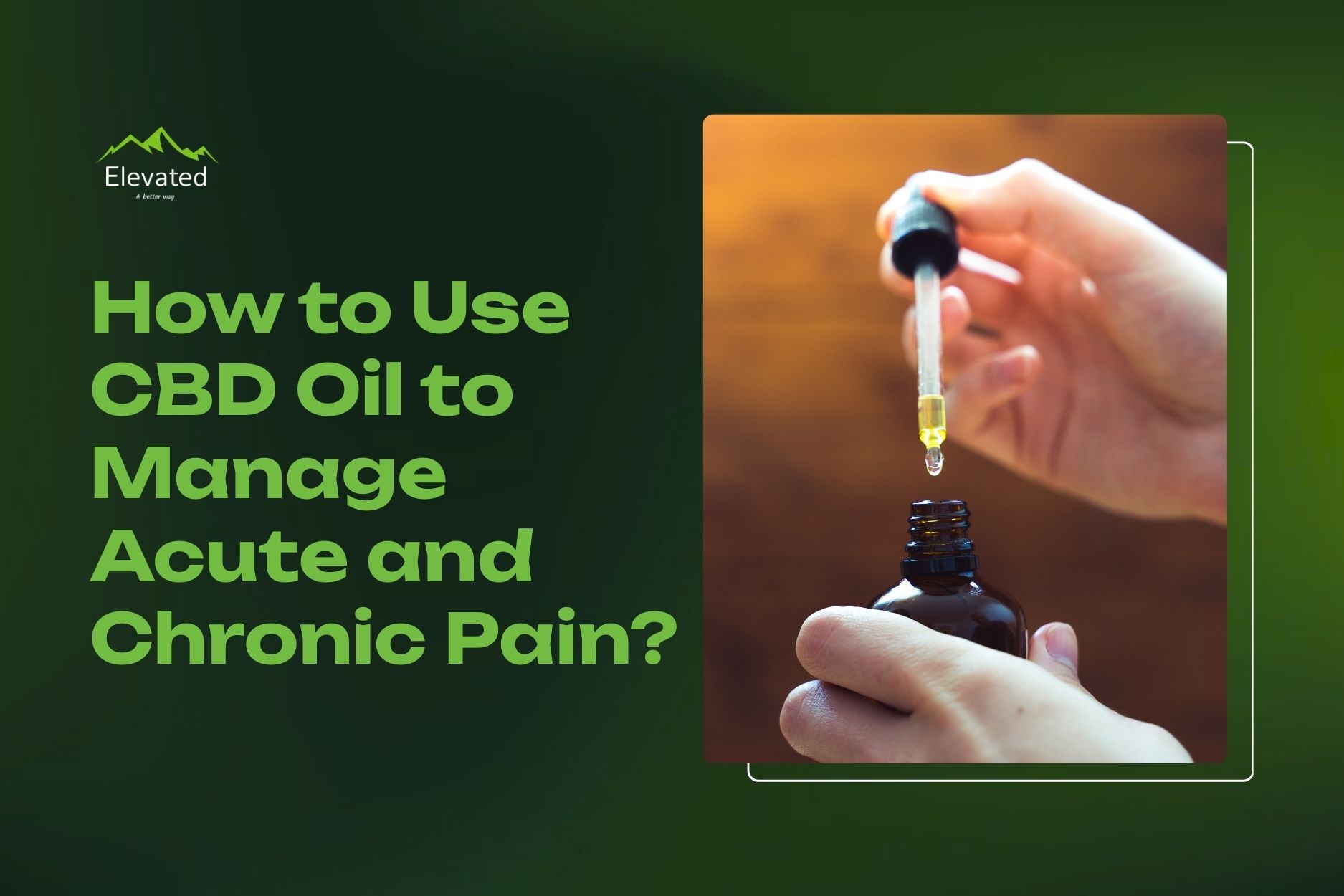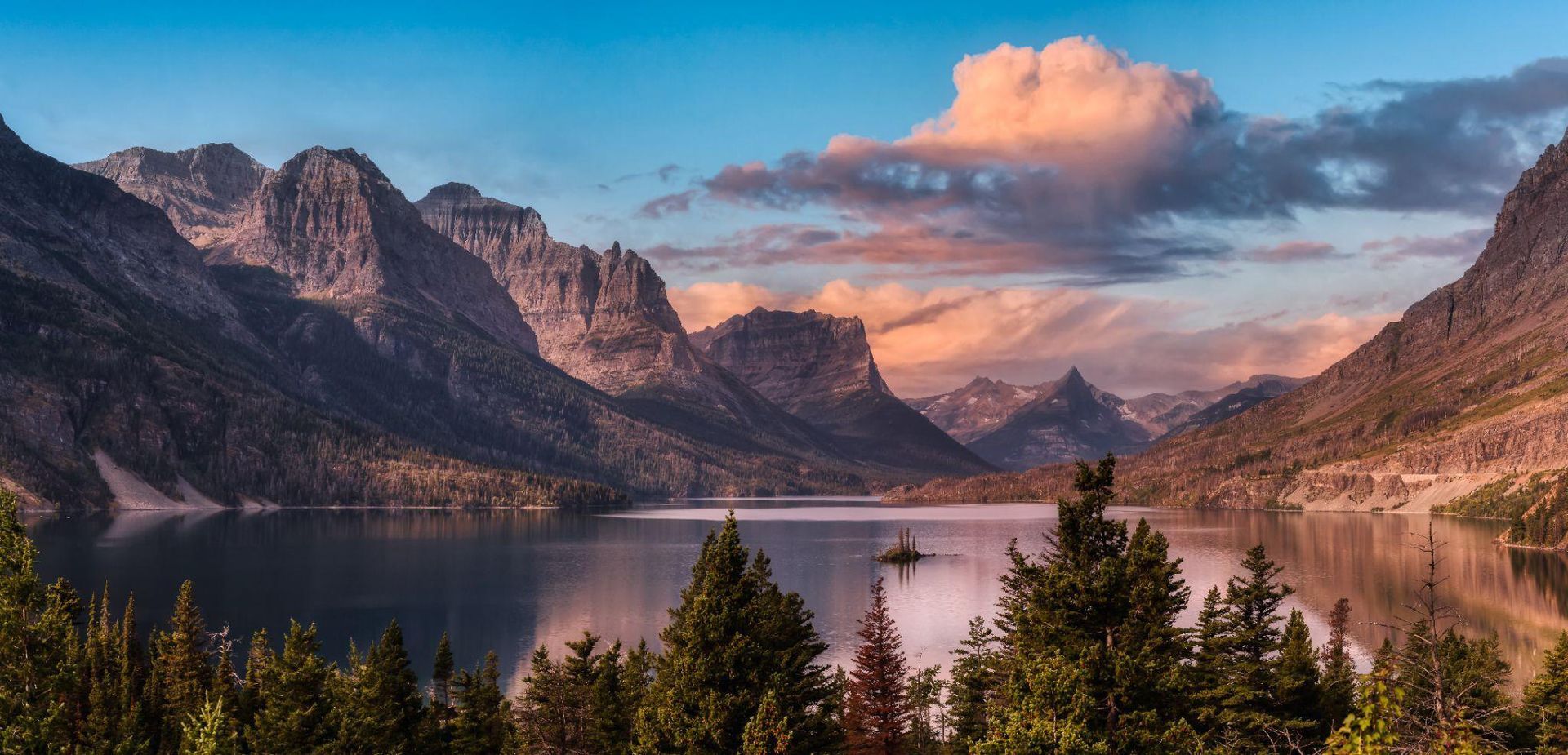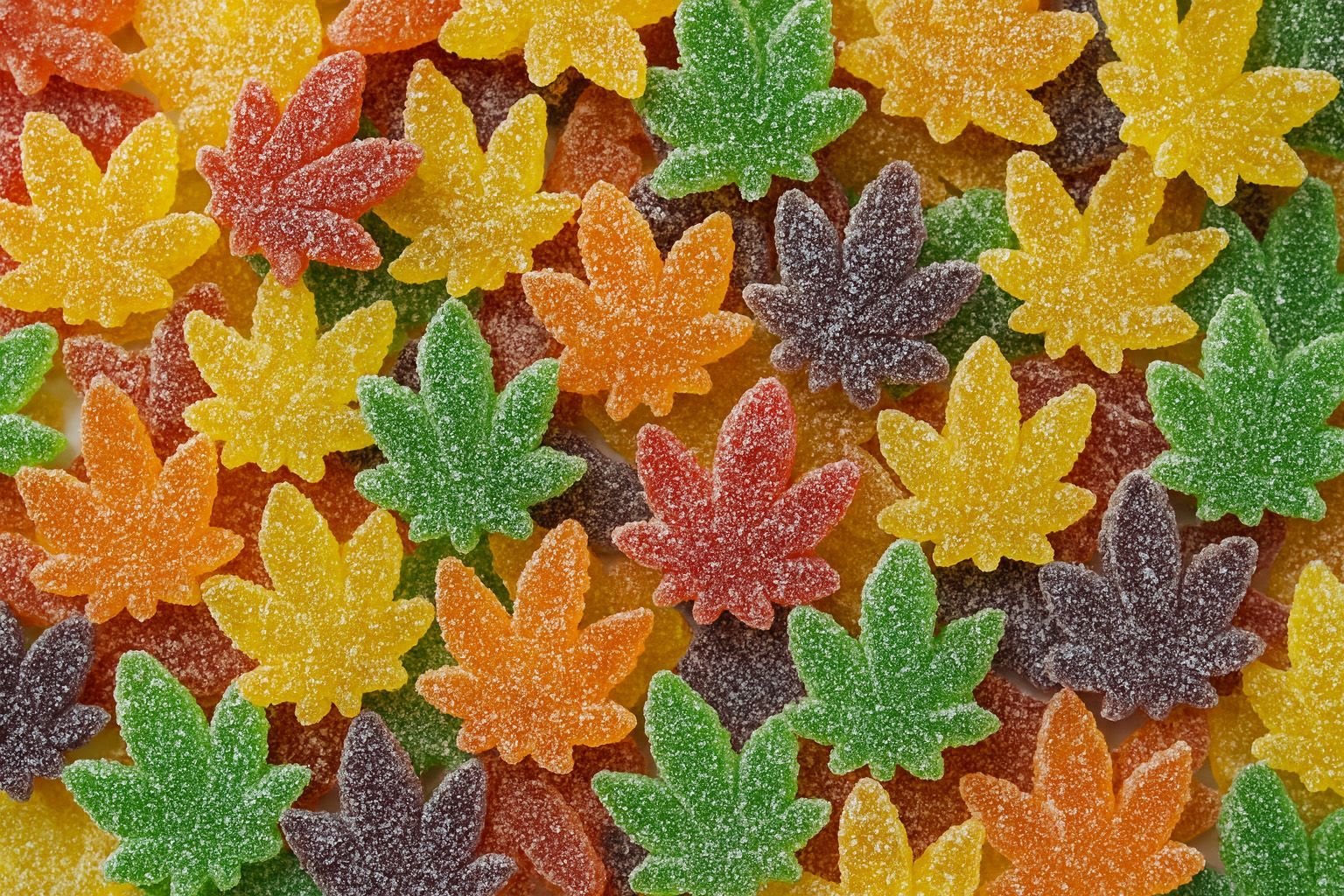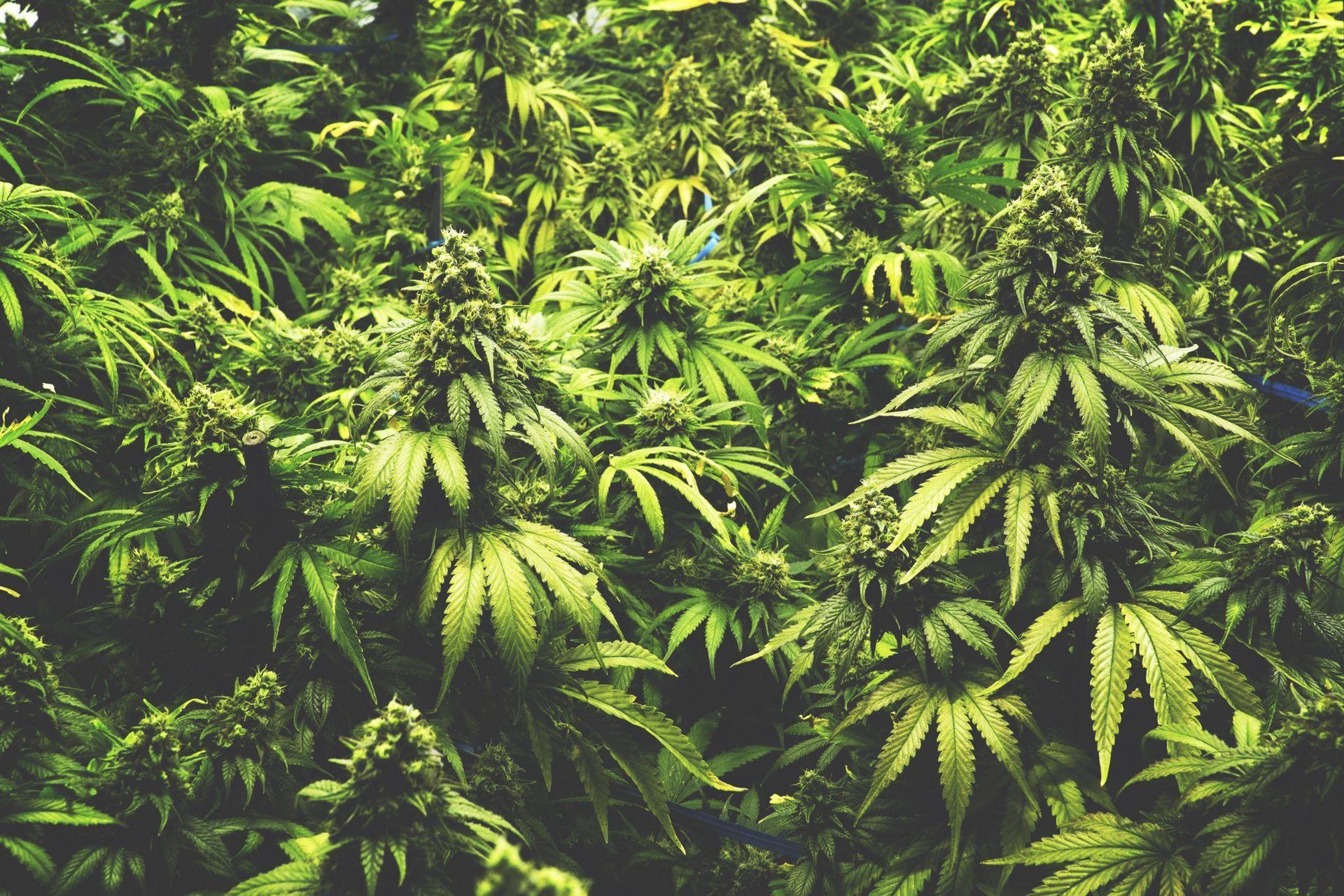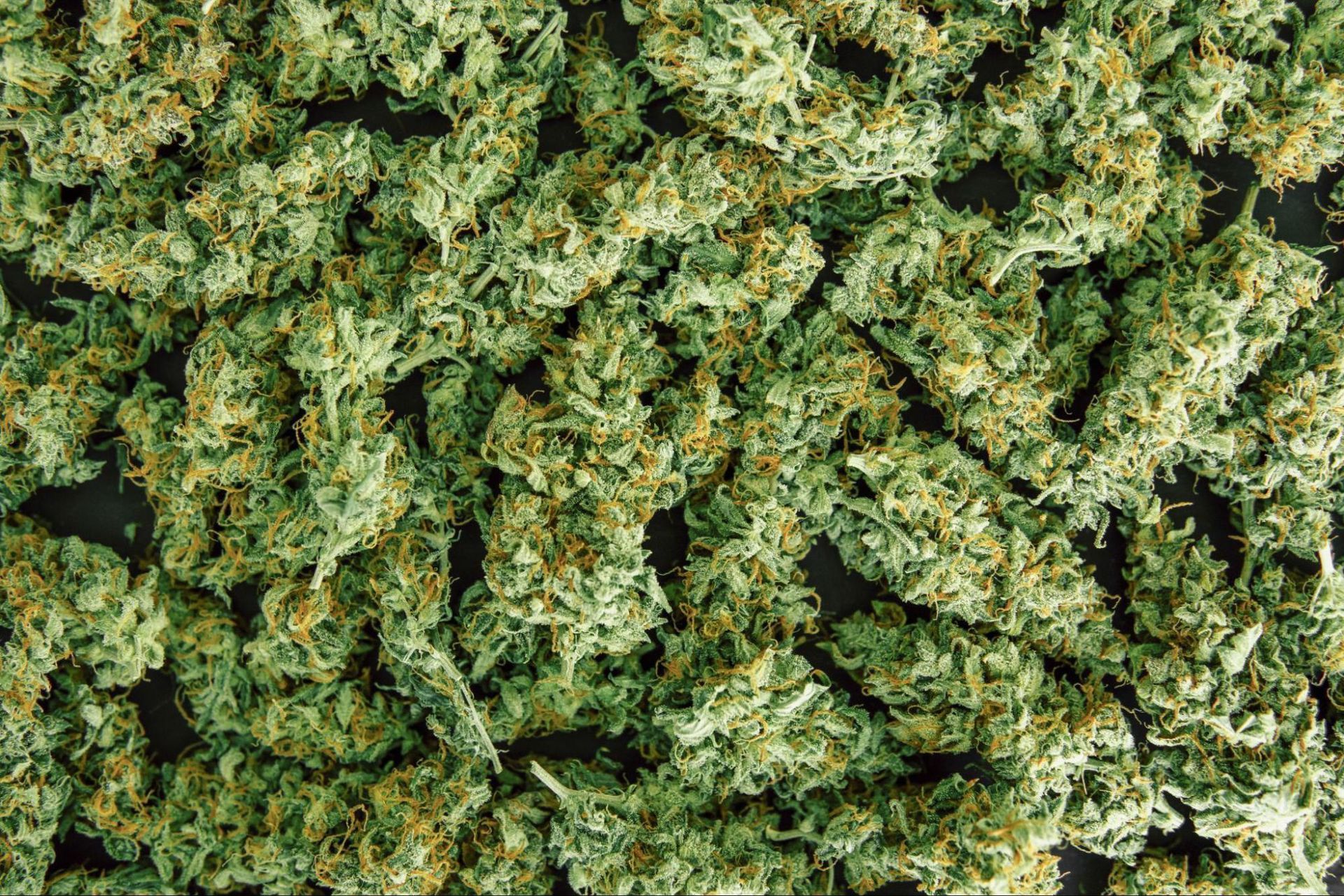How to Get a Medical Marijuana Card in Montana | Elevated
To get a medical marijuana card in Montana, see a licensed physician for a recommendation, apply through the state’s TAP portal, upload documents, and pay the $20 fee. You can print a temporary card immediately, valid for 60 days, while your permanent card is processed.
TL;DR Summary (for quick readers)

- Step 1: Get a physician recommendation (MD or DO).
- Step 2: Gather documents (photo, ID, residency proof).
- Step 3: Apply via the state’s TAP portal & pay $20.
- Step 4: Print a temporary card, valid immediately for 60 days.
- Step 5: Receive your permanent card by mail (7–30 days).
Why it matters:
- Medical = 4% tax vs. 20% recreational.
- Patients may buy up to 5 oz/month (8 oz with petition).
- Access for 18–20-year-olds and minors (with guardians).
- More generous home-grow rights.
Elevated supports new cardholders with fair pricing, veteran & tribal discounts, 70+ in-house strains, and budtender-led education.
How to Get a Medical Marijuana Card in Montana: A Local’s Guide
In Montana, we pride ourselves on independence, whether that means fixing your own truck, growing your own garden, or braving a -20° January morning without complaining (too much). But when it comes to cannabis, independence comes with rules. And one of the most common questions we hear is: “How do I get a medical marijuana card in Montana?”
That’s where we come in.
Why the Medical Card Still Matters
Since recreational cannabis became legal in Montana, some people assume medical cards aren’t worth the effort anymore. But here’s the reality:
- Medical cannabis is taxed at 4% statewide, compared to 20% for recreational. On a $250 ounce, that’s a $40+ savings right there.
- Medical patients can purchase up to 5 ounces per month (and even petition for 8 ounces with doctor approval), while recreational limits are tighter.
- Patients as young as 18 (with qualifying conditions) can legally access cannabis with a card, making the program essential for those who can’t wait until 21.
- And let’s be honest, who doesn’t like skipping the extra taxes when there’s already enough to pay for in Montana, from winter tires to fly-fishing gear?
For many Montanans, veterans, tribal members, older adults managing chronic conditions, the card isn’t just about legality. It’s about affordability, dignity, and access.
What Exactly Is a Medical Marijuana Card?
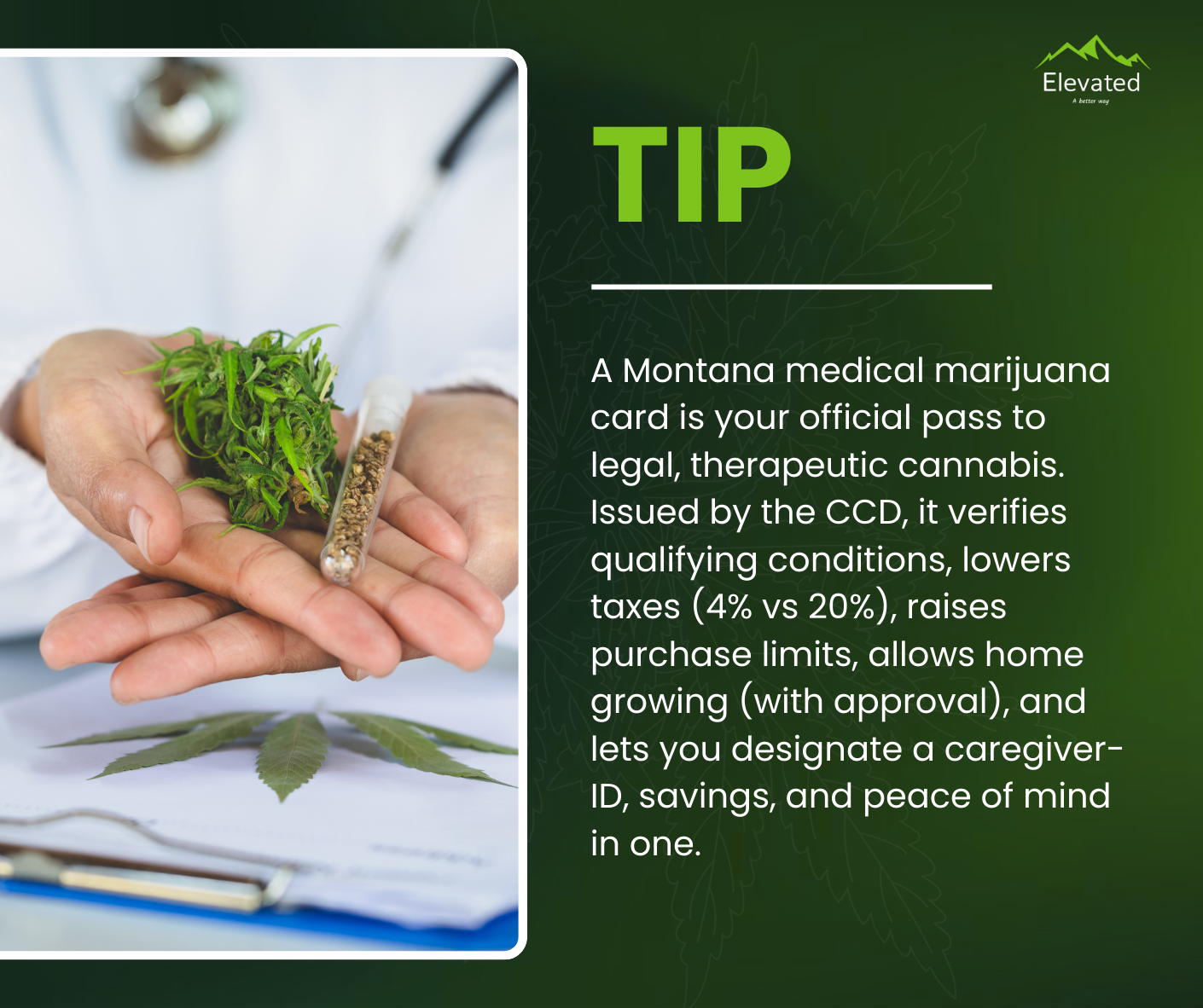
At its core, a medical marijuana card is your official ticket to access cannabis in Montana for therapeutic purposes. Issued by the Montana Department of Revenue’s Cannabis Control Division (CCD), it:
- Verifies you have a qualifying medical condition (like chronic pain, PTSD, or epilepsy).
- Allows you to legally purchase cannabis from any licensed dispensary statewide (not just one).
- Provides lower tax rates (4% vs. 20% recreational) and higher purchase limits.
- Opens the door to home cultivation (with permissions) and the option to designate someone to purchase for you.
Think of it as both a medical ID and a discount card rolled into one, with the added benefit of peace of mind.
The Legal Framework in Montana
Montana’s medical cannabis program has evolved over the years, moving from a grassroots citizen initiative to today’s structured program under the CCD. Here’s what you need to know:
- Adults 18+ with a physician’s recommendation can apply.
- Minors can apply with parent/guardian consent and two physician signatures (unless the specialist is an oncologist, neurologist, or epileptologist).
- Residency is required: you’ll need proof such as a Montana driver’s license, tribal ID, or voter registration.
- Purchase limits: Up to 1 ounce per day and 5 ounces per month, with the option to petition for 8 ounces if your condition requires it.
- Taxes: Medical cannabis is taxed at 4%, with local counties allowed to add up to 3%. Recreational? A hefty 20% plus local add-ons.
- Cultivation: Medical cardholders may grow 4 mature + 4 seedlings, compared to 2 + 2 for recreational. You’ll need landlord/owner permission if you don’t own your property.
Step-by-Step: The Official CCD Process
Here’s how you actually get the card (and where many guides skip important details):
- See a Licensed Physician
- Must be an MD or DO in Montana.
- The recommendation (a “Physician Statement for Debilitating Medical Condition”) must be signed within 60 days of your application.
- Many clinics now offer telemedicine appointments, so you can complete this from home.
- Gather Your Documents
- Proof of Montana residency (driver’s license, tribal ID, voter card, etc.)
- Passport-style photo (yes, like a driver’s license photo, no fishing hat, sorry).
- Physician Statement (uploaded as a PDF).
- Optional: property permission form (if cultivating) or designated purchaser form.
- Submit Through TAP (TransAction Portal)
- Create or sign in to your account on Montana’s TAP site.
- Upload all documents and pay the $20 state fee ($10 for replacements).
- Hit submit, then celebrate with a cup of coffee, because the hardest part is over.
- Print Your Temporary Card
- Immediately after submission, you can print a temporary card valid for 60 days.
- This allows you to shop right away while waiting for your physical card to arrive.
- Receive Your Permanent Card
- Mail times vary (7–30 days), but your temporary card ensures no gap in access.
- Renew annually with an updated physician recommendation and another $20 fee.
Why the Medical Card Matters Even in the Recreational Era
Some Montanans wonder, “Why bother? Weed’s already legal here.” Here’s the difference:
- Lower Taxes = Real Savings: On regular ounce purchases, a cardholder saves enough that the card pays for itself within a couple of months.
- More Cannabis, Legally: Higher monthly limits mean patients managing chronic conditions don’t run short.
- Younger Access: Patients 18–20 (with conditions and guardians) can access cannabis before the recreational threshold of 21.
- Home Cultivation: Grow rights are more generous for medical cardholders, helping patients control their own supply.
- Protection & Compliance: With a card, you’re operating within the strictest compliance framework, reducing risks tied to enforcement.
Expert Perspectives
- CCD (Montana Regulator): “Registered cardholders are eligible to purchase marijuana at any licensed dispensary in Montana… up to 1 ounce/day and up to 5 ounces/month; medical marijuana is taxed at 4% (+ up to 3% local).”
- Clinics: “Telemedicine has streamlined access, allowing patients to complete their evaluations without travel.”
- Health Researchers: “Higher THC potency carries risks such as cognitive impairment or dependency; clinicians recommend titrating carefully and considering terpene balance.”
Elevated’s Role in the Journey
Once you print that temporary card, your next step is choosing where to shop. This is where Elevated shines:
- Budtender-Led Education: Instead of overwhelming menus, we match you to strains based on your condition and goals.
- Patient-Friendly Pricing: Our products average 20% lower than competitors, plus veteran and tribal ID discounts.
- In-House Products: With 70+ strains, bakery-made edibles, and concentrates, we can support diverse patient needs.
- Community Support: From Access to Medicine sign-up events to food drives, Elevated brings cannabis access back to Montanans.
Why Choose Elevated After Getting Your Medical Marijuana Card
At its core, a medical marijuana card is your official ticket to access cannabis in Montana for therapeutic purposes.
Issued by the Montana Department of Revenue’s Cannabis Control Division (CCD), it:
- Verifies you have a qualifying medical condition (like chronic pain, PTSD, or epilepsy).
- Allows you to legally purchase cannabis from any licensed dispensary statewide (not just one).
- Provides lower tax rates (4% vs. 20% recreational) and higher purchase limits.
- Opens the door to home cultivation (with permissions) and the option to designate someone to purchase for you.
Think of it as both a medical ID and a discount card rolled into one, with the added benefit of peace of mind.
The Legal Framework in Montana
Montana’s medical cannabis program has evolved over the years, moving from a grassroots citizen initiative to today’s structured program under the CCD. Here’s what you need to know:
- Adults 18+ with a physician’s recommendation can apply.
- Minors can apply with parent/guardian consent and two physician signatures (unless the specialist is an oncologist, neurologist, or epileptologist).
- Residency is required: you’ll need proof such as a Montana driver’s license, tribal ID, or voter registration.
- Purchase limits: Up to 1 ounce per day and 5 ounces per month, with the option to petition for 8 ounces if your condition requires it.
- Taxes: Medical cannabis is taxed at 4%, with local counties allowed to add up to 3%. Recreational? A hefty 20% plus local add-ons.
- Cultivation: Medical cardholders may grow 4 mature + 4 seedlings, compared to 2 + 2 for recreational. You’ll need landlord/owner permission if you don’t own your property.
Step-by-Step: The Official CCD Process
Here’s how you actually get the card (and where many guides skip important details):
- See a Licensed Physician
- Must be an MD or DO in Montana.
- The recommendation (a “Physician Statement for Debilitating Medical Condition”) must be signed within 60 days of your application.
- Many clinics now offer telemedicine appointments, so you can complete this from home.
- Gather Your Documents
- Proof of Montana residency (driver’s license, tribal ID, voter card, etc.)
- Passport-style photo (yes, like a driver’s license photo, no fishing hat, sorry).
- Physician Statement (uploaded as a PDF).
- Optional: property permission form (if cultivating) or designated purchaser form.
- Submit Through TAP (TransAction Portal)
- Create or sign in to your account on Montana’s TAP site.
- Upload all documents and pay the $20 state fee ($10 for replacements).
- Hit submit, then celebrate with a cup of coffee, because the hardest part is over.
- Print Your Temporary Card
- Immediately after submission, you can print a temporary card valid for 60 days.
- This allows you to shop right away while waiting for your physical card to arrive.
- Receive Your Permanent Card
- Mail times vary (7–30 days), but your temporary card ensures no gap in access.
- Renew annually with an updated physician recommendation and another $20 fee.
Why the Medical Card Matters Even in the Recreational Era
Some Montanans wonder, “Why bother? Weed’s already legal here.” Here’s the difference:
- Lower Taxes = Real Savings: On regular ounce purchases, a cardholder saves enough that the card pays for itself within a couple of months.
- More Cannabis, Legally: Higher monthly limits mean patients managing chronic conditions don’t run short.
- Younger Access: Patients 18–20 (with conditions and guardians) can access cannabis before the recreational threshold of 21.
- Home Cultivation: Grow rights are more generous for medical cardholders, helping patients control their own supply.
- Protection & Compliance: With a card, you’re operating within the strictest compliance framework, reducing risks tied to enforcement.
Expert Perspectives
- CCD (Montana Regulator): “Registered cardholders are eligible to purchase marijuana at any licensed dispensary in Montana… up to 1 ounce/day and up to 5 ounces/month; medical marijuana is taxed at 4% (+ up to 3% local).”
- Clinics: “Telemedicine has streamlined access, allowing patients to complete their evaluations without travel.”
- Health Researchers: “Higher THC potency carries risks such as cognitive impairment or dependency; clinicians recommend titrating carefully and considering terpene balance.”
Elevated’s Role in the Journey
Once you print that temporary card, your next step is choosing where to shop. This is where Elevated shines:
- Budtender-Led Education: Instead of overwhelming menus, we match you to strains based on your condition and goals.
- Patient-Friendly Pricing: Our products average 20% lower than competitors, plus veteran and tribal ID discounts.
- In-House Products: With 70+ strains, bakery-made edibles, and concentrates, we can support diverse patient needs.
- Community Support: From Access to Medicine sign-up events to food drives, Elevated brings cannabis access back to Montanans.
Why Choose Elevated After Getting Your Medical Marijuana Card
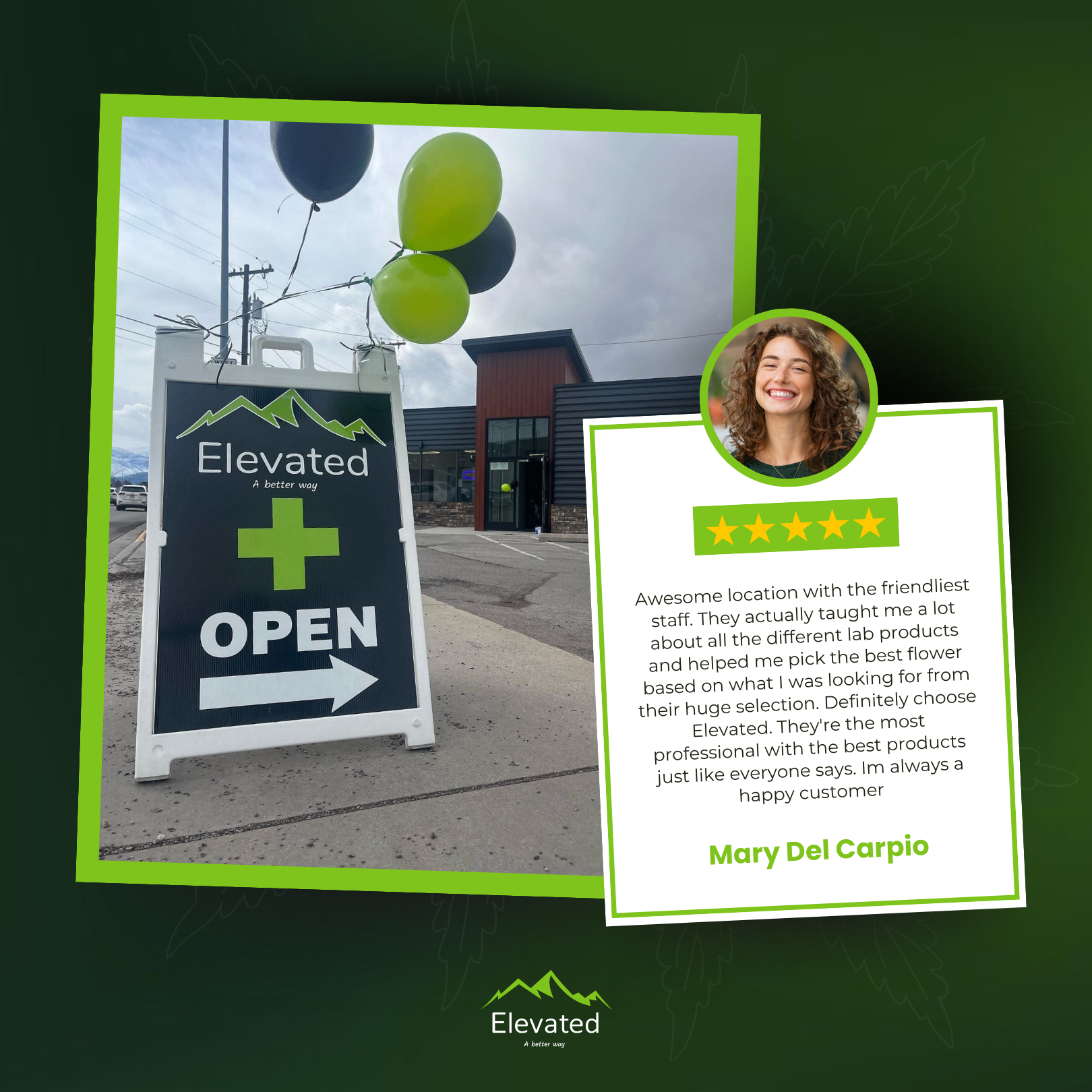
Once you’ve gone through the steps of applying, uploading documents, and printing your temporary card, the big question is: Where should you go first?
Not all dispensaries in Montana are the same. Some focus on daily “flash sales.” Others emphasize nothing but THC percentages. And a few feel more like a corporate chain than a Montana-owned business.
At Elevated, we’ve spent years proving that cannabis in Montana can be done differently, with fair pricing, in-house products, knowledgeable budtenders, and deep community roots.
Here’s why patients choose us once they’ve got their medical card.
Prices That Put Patients First
Getting your card is all about affordability and access. Elevated makes sure that continues when you walk through our doors:
- 20% Lower Prices (on average): Elevated’s everyday pricing beats statewide competitors without gimmicks.
- Medical Tax Advantage: We educate patients on how to maximize savings, stacking the 4% medical tax rate with our own veteran and tribal ID discounts.
- No Surprise Markups: Whether you shop in Billings or Kalispell, our pricing is consistent. Tourists don’t pay one rate while locals pay another; everyone gets Montana-fair prices.
For patients on a budget, this means your medical card stretches further at Elevated.
Products Made in Montana, for Montanans
When you’re managing a medical condition, quality and consistency matter. Elevated stands out by producing most of what we sell, ensuring control from seed to sale:
- 70+ Strains of Flower: Cultivated in-house, giving patients options for pain, anxiety, sleep, creativity, and beyond.
- Bakery-Made Edibles: Gummies, cookies, and baked goods made right here in Montana, not shipped in from out of state.
- Lab-Tested Concentrates: Clean, safe, and crafted in-house for patients who prefer alternative delivery methods.
- CBD & Balanced Options: For patients who need relief without overpowering intoxication.
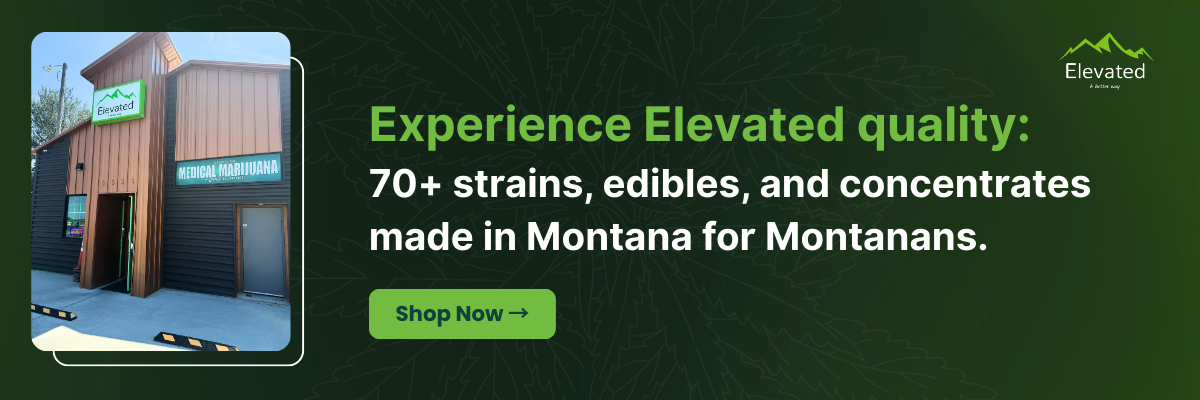
This depth means no matter your medical needs, Elevated has products tailored to you.
People Who Listen, Not Just Sell
Shopping for medical cannabis can feel intimidating, especially if you’re new. Elevated removes the pressure with our budtender-led, no-menu approach.
- No Overwhelming Wall of Products: Instead, we start with: “What do you need help with today?”
- Effect-Based Guidance: Budtenders match strains by terpene profile and intended effect, not just THC % on a label.
- Patient Education: We explain dosing, timing, and formats so patients feel confident and safe.
Patients often describe our staff as welcoming, friendly, and knowledgeable, the opposite of the “grubby head shop” stereotype.
Community at the Core
Elevated isn’t just a dispensary. We’re a Montana-owned business that reinvests in the communities we serve:
- Veteran Recognition: Discounts and respect for those who served.
- Tribal Partnerships: Helping Indigenous communities secure cards through Access to Medicine events.
- Student Employment: Providing jobs for Montana college students looking to learn and earn.
- Local Giving: From food drives to advocacy, Elevated shows up for Montana.
When you shop with Elevated, you’re not supporting a faceless MSO. You’re supporting a Montana brand that supports you back.
Locations That Keep Access Simple
With 18+ stores statewide, Elevated makes sure patients never have to travel far for medicine. Whether you’re in a city like Billings or a smaller town like Harlem, you can count on Elevated for:
- Consistent product availability
- Transparent pricing
- Knowledgeable, friendly budtenders
- A professional, polished shopping environment
The Elevated Promise
To sum it up:
- Prices: Affordable, consistent, and patient-focused.
- Products: Montana-grown, in-house crafted, and lab-tested.
- People: Budtenders who guide you toward the right medicine, not the most expensive one.
- Place: A Montana company rooted in community, not corporate shareholders.
For new medical cardholders, Elevated is more than a dispensary. It’s a partner in your health journey, one that respects Montana values and puts people first.
Find Your Nearest Store → See Menus & Locations
Common Questions About Getting a Medical Marijuana Card in Montana
What Montanans Really Want to Know
When someone searches “how to get a medical marijuana card in Montana,” they usually aren’t looking for legal jargon. They’re looking for plain answers. Here are the most common questions Montanans ask, with honest, practical explanations (and maybe a little humor along the way).
How long does it take to get a medical card?
Short answer: Faster than getting your hunting tag renewed, slower than ordering a pizza.
Details: You can print a temporary card immediately after submitting your TAP application. It’s valid for 60 days, so you can shop right away. The physical card usually arrives in 7–30 days, depending on state processing.
Do I have to stick to one dispensary?
Nope. That rule went out with dial-up internet. Today, medical cardholders in Montana can purchase from any licensed dispensary statewide.
At Elevated, this means you’re never “locked in.” Whether you’re in Billings, Missoula, or stopping through Sidney, you can shop at one of our 18+ locations with confidence.
Is it cheaper with a medical card?
Yes, significantly.
- Recreational cannabis = 20% state tax (+ local).
- Medical cannabis = 4% state tax (+ local).
- On a $250 ounce, that’s a $30–$40 savings every single time.
Add Elevated’s veteran or tribal ID discounts, and the savings stack even higher. Most patients say their card pays for itself after just a couple of visits.
Can young adults (18–20) get a card?
Yes. Recreational access is limited to 21+, but patients 18 and older can qualify for medical access with a physician’s recommendation.
For minors under 18, it’s stricter:
- Must have a parent/guardian’s consent.
- Need two physician statements (unless the specialist is an oncologist, neurologist, or epileptologist).
- Guardian acts as the designated purchaser.
What about designated purchasers? How does that work?
Think of them as your cannabis proxy.
- You can appoint up to
two people to purchase cannabis for you.
They must be 21+, carry your card with them, and present their own valid ID. - Many patients designate a spouse, adult child, or close friend for convenience.
Elevated budtenders are used to working with designated purchasers and will always ensure compliance.
What documents do I actually need?
You’ll need:
- Proof of Montana residency (driver’s license, tribal ID, or voter registration).
- A passport-style photo (yes, even if you’re destined to hate it).
- Your physician’s statement.
- Optional: property owner permission (if cultivating) or designated purchaser form.
Pro tip: Start gathering these early. It makes your TAP submission smooth and stress-free.
Does insurance cover medical cannabis?
Unfortunately, no. Insurance companies don’t cover cannabis costs in Montana, so patients pay the $20 state fee and any doctor evaluation costs out-of-pocket.
But the tax savings and Elevated’s fair pricing offset much of this, especially for patients who purchase regularly.
Are medical cards worth it now that recreational is legal?
Absolutely. Some people assume medical cards lost their value when adult-use became legal, but here’s why that’s a myth:
- Lower taxes mean long-term savings.
- Higher purchase limits make it practical for medical patients.
- Access for 18–20 year olds and minors with guardian consent.
- More generous home-grow rules.
If you’re managing chronic conditions, a medical card is still the smart move.
What happens if I move or change doctors?
You need to update your info in TAP within 10 days to stay compliant. That includes changes in:
- Address
- Physician
- Name or medical condition status
It’s quick online, but important; otherwise, the state can revoke your card.
Is THC percentage all that matters when buying?
Not at all. This is one of the biggest misconceptions in cannabis. While THC percentage can influence potency, the terpene profile and overall cannabinoid balance are what shape the actual effects.
At Elevated, our budtenders spend time matching patients to strains based on effects, not just numbers. That’s why customers often find more relief (and more value) even with mid-THC strains.
What if I need more than 5 ounces per month?
You can petition the CCD for an increased monthly limit of up to 8 ounces. Your physician must sign off and document the medical necessity.
Elevated often helps patients with this process by explaining the paperwork and ensuring they know what to ask their doctor.
Do tribal IDs work for everything?
Yes. Tribal IDs are accepted as proof of residency for TAP applications, and they’re honored in dispensaries at checkout. At Elevated, we also offer tribal ID discounts, one more way we recognize and respect Montana’s Indigenous communities.
Quick Myth-Busting Recap
- “You must stick to one dispensary.” False. Shop anywhere statewide.
- “Medical cards aren’t worth it anymore.” False. Tax savings + higher limits = huge benefits.
- “Insurance covers cannabis.” False. All costs are out-of-pocket.
- “Temporary cards don’t work.” False. They’re valid for 60 days immediately.
- “Designated purchasers can be under 21.” False. Must be 21+.
Disclaimer
This article is for educational purposes only and is not legal or medical advice. Cannabis laws and processes in Montana may change. Always verify current requirements with the Montana Cannabis Control Division (CCD) and consult a licensed Montana physician before applying. Cannabis use is restricted to adults 21+ or registered medical patients. Do not drive or operate machinery while impaired.
References (EEAT-Compliant)
- Montana Department of Revenue, Cannabis Control Division (CCD, 2025) – Medical marijuana registry application process, limits, and tax schedule.
- Montana Free Press (2024): Overview of Montana’s cannabis laws and adult-use vs. medical distinctions.
- Statista Research Dept. (2025): Average cannabis prices and tax impact by state.
- Montana Code Annotated 16-12-503 (2024): Cardholder change reporting requirements (10-day rule).
- Elevated Montana Brand Materials (2024): Locally owned since 2017; in-house cultivation, bakery-made edibles, veteran & tribal discounts.
Health Evidence Reviews (NIH, 2023):
THC potency, impairment risk, and clinician guidance on safe use.
